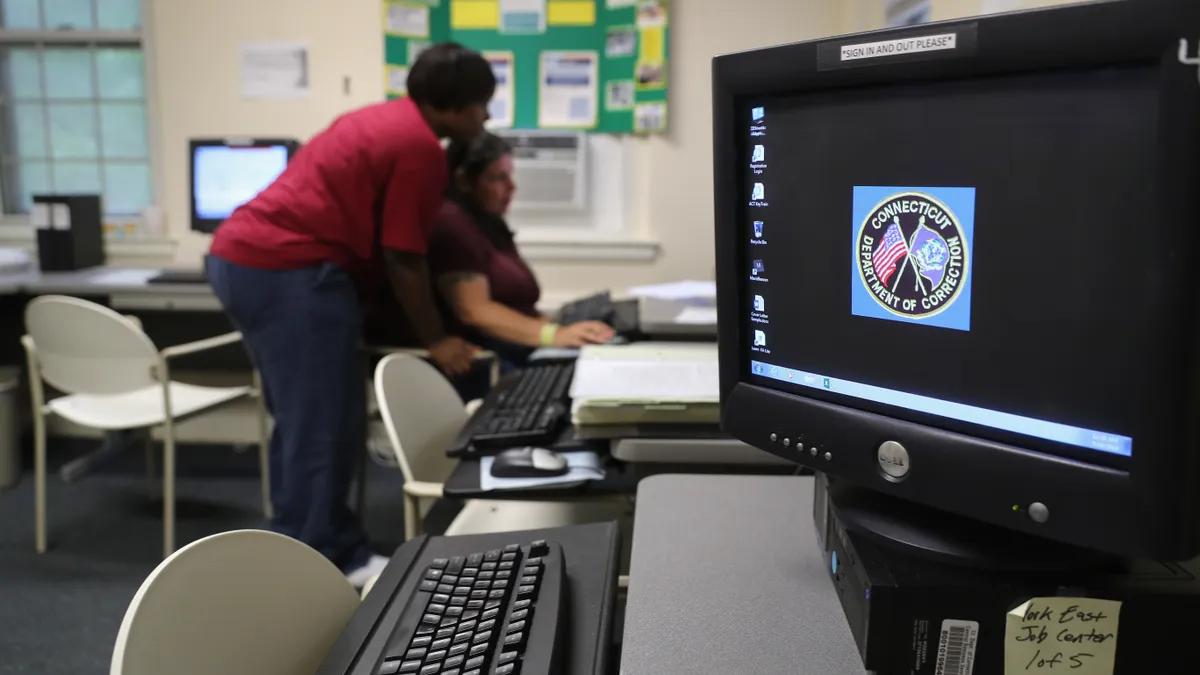When it comes to second-chance hiring, companies can take a few practical steps to get it right.
From offering inclusive policies to checking their biases at the door, employers can tap into a large talent pool if they follow some tried-and-true best practices, experts say.
“There are tremendous business benefits in increasing your inclusive hiring practices to include all different types of populations, and that definitely includes justice-impacted folks or people with records,” Ken Oliver, vice president of corporate social responsibility at Checkr.org and executive director of the Checkr Foundation, told HR Dive.
Look past the background check.
Ban-the-box laws exist in many states — at least 37 — but those laws don’t always have teeth to them, according to new research by Robert Kaestner, a research professor at the University of Chicago Harris School of Public Policy.
Employers need to take the initiative to look beyond the background check, Oliver said.
“Background checks are a piece of paper that has information on it. And most of the time, we make decisions based on that information that's on the piece of paper without understanding the human story behind the piece of paper,” Oliver said.
He recommended that employers take an individualized assessment of every candidate. By interviewing job applicants, hiring managers can glean the circumstances behind the record, Oliver said.
Create inclusive HR policies.
Another way employers can support justice-impacted talent is by ensuring they have the time needed to visit parole officers or participate in required programs, Terah Lawyer told HR Dive. Lawyer is executive director of CROP, an organization providing reentry support and training for formerly incarcerated individuals. Ideally, employers should not create additional obstacles for workers, she said.
Doing so doesn’t mean giving workers get-out-of-jail-free cards or Willa Wonka-esque golden tickets, said Lawyer, who was incarcerated for 15 years. Instead, it means giving people a key to a door they have to walk through themselves, she said.
“It doesn't mean a handout; it’s a ‘hand up,’” Lawyer said.
Employers also can provide digital or technological training to workers who might not have had access to Google Suite, Microsoft, Asana or Slack, the same way they would for any employee without a particular skill set, Oliver said.
“I encourage companies not to treat people differently,” Oliver said.
Recognize your biases.
“We have to look in the mirror at our own conscious and unconscious biases about human beings because I think we've all been told stories of what a person with a record is or isn't,” Oliver said. These assumptions come from watching shows like “America’s Most Wanted” or “Dateline,” he said.
Yet, most of the time, “those myths that we told ourselves, those narratives we told ourselves, simply aren't true,” Oliver said.
Team up with community-based organizations.
Oliver’s last piece of advice for integrating justice-impacted talent into the workplace is to partner with community-based organizations, particularly those involved in criminal justice reform. These organizations can not only connect companies to potential hires but also can identify workforce development programs.













